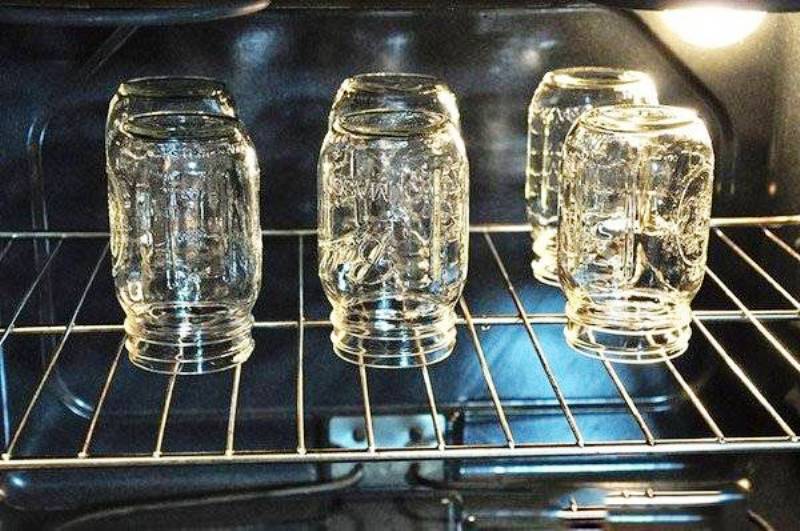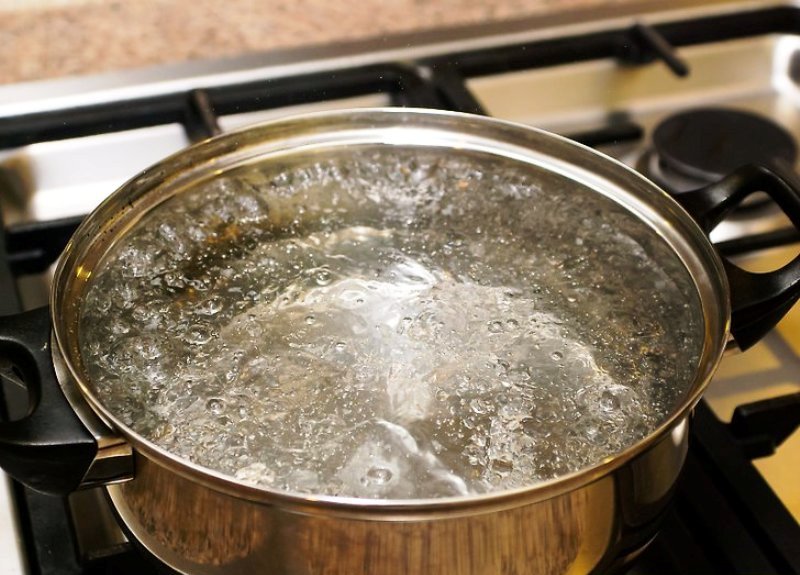Is it possible and how to sterilize jars in the oven
The main purpose of canning is to preserve useful macro- and microelements, vitamins, as well as the taste of products. For storage of such workpieces, as a rule, glass containers are used. To prevent food spoilage, cans are heat treated. There are several ways to sterilize, each with their own pros and cons.

- Is it possible to sterilize jars in the oven
- How to sterilize empty jars and lids in the oven
- Sterilizing cans in an electric oven
- Sterilizing cans in a gas stove oven
- Pasteurization of cans in the oven
- How to sterilize cans of blanks
- How to sterilize empty jars without an oven
- Conclusion
- VIDEO: How to properly sterilize jars in the oven.
Is it possible to sterilize jars in the oven
Before learning how to sterilize jars in the oven, empty or with blanks, you need to understand, is it allowed to process dishes with high temperatures in the oven? Sterilization in the traditional way with steam gives good results. But this method is not always practical. If you need to handle a lot of dishes, then sterilization turns into a long process, since only one container is placed above the boiling water in the kettle.

To save time, the hostesses discovered all the advantages of heat treatment in the oven. This is one of the safest options, provided you choose the optimal regimen. In this case, it is imperative that certain rules are observed, then the bank will not burst, and all bacteria will be destroyed.

Fundamental rules:
- the household appliance must be clean before use;
- the glass container is sterilized immediately before the blanks are laid;
- banks should not touch (must be placed in a free order);
- do not allow a sharp change in temperature (the container may burst);
- observe the timer;
- do not allow cold water to come into contact with dry sterilized jars.

Important! Before heat treatment, containers are placed only in an unheated oven. After sterilization is completed, they must cool down, and only then can they be removed.
Dry disinfection of cans in the oven is effective, kills all bacteria, eliminates the likelihood of burns and stuffiness in the room (which is typical for the steam sterilization process).

How to sterilize empty jars and lids in the oven
Before heat treatment, cans and lids must be prepared in advance. In this case, only metal lids are subjected to dry sterilization. The containers should be free of chips, scratches, cracks, rust (touches the lids) and other abrasions. This is necessary to prevent a breach of the tightness of the vessel both during processing and during further storage of the workpieces.

Lids and containers are thoroughly washed and rinsed.If chemicals are used for cleaning, rinse with running water for longer. In the first version, the container is installed with the neck down, in the second - up, to evaporate excess water.

Sterilizing cans in an electric oven
Sterilization of cans in an electric stove oven is much easier, since the temperature in such a device is evenly distributed.
Heat treatment is carried out according to the following instructions:
- the oven must be washed and free from foreign odors;
- clean containers and metal lids without rubber bands are placed on a wire rack or baking sheet in a loose order, not tightly to each other;
- put in a cold oven;
- heating should be gradual and take place with a certain temperature interval: 40 ° - 2 min, 60 ° - 1 min, 80 ° - 1 min, 100 ° - at least 1 min (the maximum temperature for sterilizing glass jars in an electric oven is 120-150 °);
- after the end of the set timer, wait 5-10 minutes for the containers to cool down.

For reference! If hot fill is used for preservation, hot cans can be taken. Warm or chilled products are placed only in chilled containers.
When processing dishes in an electric oven, take into account the location of the heating elements. It is necessary to install containers at the same level or increase the disinfection time interval for items placed on the lower tier of the household appliance.

Sterilizing cans in a gas stove oven
The sterilization process in a gas oven is practically the same as in an electric oven. There is only one difference - the maximum heating temperature is 180 °. The fire is lit at low power so that the cans heat up gradually.

The volume of the processed container affects the sterilization time:
- 0.5-0.75 l - 10 minutes;
- 1 liter - 15 minutes;
- 1.5-2 liters - 20 minutes;
- 3 l - half an hour.
It takes 10 minutes to sterilize the lids.
Pasteurization of cans in the oven
The process of processing at high temperatures is not always suitable for preserving the useful properties and taste of the workpieces. In this case, a longer heat treatment at lower temperatures is appropriate.

The time interval for pasteurization of empty cans is increased by 1.5-2 times, and the temperature is reduced by 10-15 °. How to pasteurize a glass container correctly:
- cans are installed with their neck down in a cold oven;
- the heating of the space of the household appliance should be gradual (for a start, set the temperature to 60 °);
- after a few minutes, increase the degrees to the maximum temperature for pasteurization - 90 °;
- processing time is not less than 20 min.

How to sterilize cans of blanks
Many recipes for blanks involve sterilizing glass containers along with ingredients. This is necessary in order for canned foods to last longer.

How to properly sterilize filled jars in the oven:
- glassware can be placed not only in a cold, but also slightly preheated oven;
- there must be a distance of at least 5 cm between the banks (up to 6-8 cans with a volume of 1-1.5 liters can be placed);
- each jar can be covered with a metal lid (you cannot twist);
- set the required temperature (mainly 120 °).

After heating to the desired degrees, you need to set a timer. The minutes are counted from the moment when the surface of the workpieces begins to boil. If the recipe does not indicate how long heat treatment is required, then sterilization is carried out as much as for empty cans.

After the completion of the process, the containers with the ingredients are carefully removed from the oven and immediately rolled up.

Important! Rolls are placed only on a dry towel. If it is even slightly damp, the jar may burst due to the temperature difference.
How to sterilize empty jars without an oven
Disinfection with an oven is just one of the options for processing cans. You can use several more methods.
For a couple
In this situation, you will need a saucepan, the size of which will depend on the number of sterilized cans.

As soon as the water boils, a metal sieve, colander or other structure that allows steam to pass through is placed on the surface. Place containers upside down on top. For containers with a volume of 0.5 liters, 10 minutes of processing is enough, for 1.5 liters - 20 minutes, 3 liters - 30 minutes is enough.

For reference! For sterilization, a kettle, a double boiler, a pressure cooker, a dishwasher, and even a potassium permanganate solution are also used.
On the water
One of the easy and not energy consuming ways. In this case, you will need a large saucepan. The container is filled with water, jars are placed in it, put on fire and brought to a boil. After that, the dishes are taken out and laid out on a dry towel with the neck up.

In the microwave
The destruction of microbes in the microwave speeds up the disinfection process. Only cans can be processed, it is advisable to boil the lids in a separate container.

For the procedure, jars filled with water (approximately 2 cm from the bottom) are placed in the microwave oven. It is forbidden to put empty containers. The maximum power and a timer are set for 5-6 minutes. The water in the container should boil. After that, the cans must be taken out with dry tacks.

Conclusion
Rinsing cans under running water is not enough to preserve homemade products. As a rule, even after thorough washing, countless bacteria remain. To get rid of microbes and preserve the useful properties of the blanks, container sterilization is necessary. There are many methods of heat treatment, which one to choose is up to the hostess herself, based on personal preferences.
VIDEO: How to properly sterilize jars in the oven.









